Use this nursing care plan and management guide to help care for patients with pancreatitis. Enhance your understanding of nursing assessment, interventions, goals, and nursing diagnosis, all specifically tailored to address the unique needs of individuals facing pancreatitis. This guide equips you with the necessary information to provide effective and specialized care to patients dealing with pancreatitis.
What is Pancreatitis?
Pancreatitis is a disease in which the pancreas (the large gland behind the stomach and next to the small intestine) becomes inflamed. It is a painful inflammatory condition in which the enzymes of the pancreas are prematurely activated resulting in autodigestion of the pancreas. The common cause of pancreatitis are biliary tract disease and alcoholism, but can also result from such things as abnormal organ structure, blunt trauma, penetrating peptic ulcers, and drugs such as sulfonamides and glucocorticoids.
Pancreatitis may be acute or chronic, with symptoms mild to severe.
- Acute pancreatitis is a sudden inflammation that lasts for a short time. It may range from mild discomfort to a severe, life-threatening illness.
- Chronic pancreatitis is long-lasting inflammation of the pancreas. It most often happens after an episode of acute pancreatitis.
Nursing Care Plans and Management
Nursing care management of patients with pancreatitis includes relief of pain and discomfort caused by pancreatitis, improvement of nutritional status, improving respiratory function, and improvement of fluid and electrolyte status.
Nursing Problem Priorities
The following are the nursing priorities for patients with pancreatitis:
- Manage pain and discomfort associated with pancreatitis.
- Monitor and stabilize vital signs.
- Administer intravenous fluids and maintain hydration.
- NPO (nothing by mouth) status and provide nutritional support as necessary.
- Administer appropriate medications for pain control and to manage inflammation.
- Monitor pancreatic enzyme levels and pancreatic function.
- Address complications such as infection or pseudocysts.
- Educate patients on dietary modifications and lifestyle changes to prevent future episodes.
Nursing Assessment
Assess for the following subjective and objective data:
- Complaints of severe abdominal pain, typically located in the upper abdomen or radiating to the back
- Description of the pain, such as a constant or intermittent, sharp or dull sensation
- Reports of nausea and vomiting
- History of recent alcohol consumption or high-fat meal intake
- Presence of jaundice (yellowing of the skin and eyes) in cases of obstructive pancreatitis
- Reports of weight loss or changes in appetite
- Personal or family history of pancreatitis or pancreatic disorders
- Observation of abdominal tenderness or guarding on palpation
- Presence of abdominal distension
- Signs of dehydration, such as dry mucous membranes, decreased skin turgor, or low urine output.
- Fever
- Laboratory findings, including elevated levels of pancreatic enzymes such as amylase and lipase.
Nursing Diagnosis
Following a thorough assessment, a nursing diagnosis is formulated to specifically address the challenges associated with pancreatitis based on the nurse’s clinical judgement and understanding of the patient’s unique health condition. While nursing diagnoses serve as a framework for organizing care, their usefulness may vary in different clinical situations. In real-life clinical settings, it is important to note that the use of specific nursing diagnostic labels may not be as prominent or commonly utilized as other components of the care plan. It is ultimately the nurse’s clinical expertise and judgment that shape the care plan to meet the unique needs of each patient, prioritizing their health concerns and priorities.
Nursing Goals
Goals and expected outcomes may include:
- The client will report relief/control of pain.
- The client will follow the prescribed therapeutic regimen.
- The client will verbalize nonpharmacologic methods that provide relief.
- The client will demonstrate the use of relaxation skills and diversional activities, as indicated, for the individual situation.
- The client will maintain adequate hydration as evidenced by stable vital signs, good skin turgor, prompt capillary refill, strong peripheral pulses, and individually appropriate urinary output.
- The client will demonstrate progressive weight gain toward the goal with normalization of laboratory values
- The client will experience no signs of malnutrition.
- The client will demonstrate behaviors, and lifestyle changes to regain and/or maintain an appropriate weight.
- The client will demonstrate adequate fluid balance as evidenced by stable vital signs, palpable pulses (good quality); normal skin turgor, moist mucous membranes; individual appropriate urinary output; lack of excessive weight fluctuation; and no edema present.
- The client will maintain fluid volume at a functional level as evidenced by individually adequate urinary output, and stable vital signs.
Nursing Interventions and Actions
Therapeutic interventions and nursing actions for patients with pancreatitis may include:
1. Relieving Pain and Discomfort
Pancreatitis is associated with pain due to multiple factors. The obstruction of the pancreatic and biliary tract can cause a buildup of pressure, leading to pain. Also, the inflammation can extend to the retroperitoneal nerve plexus, which can cause severe pain. Autodigestion of the pancreas also releases digestive enzymes that can damage surrounding tissues and cause pain.
Investigate verbal reports of pain, noting specific location and intensity (0–10 scale). Note factors that aggravate and relieve pain.
Pain is often diffuse, severe, and unrelenting in acute or hemorrhagic pancreatitis. Severe pain is often the major symptom in patients with chronic pancreatitis. Isolated pain in the RUQ reflects the involvement of the head of the pancreas. Pain in the left upper quadrant (LUQ) suggests the involvement of the pancreatic tail. Localized pain may indicate the development of pseudocysts or abscesses.
Maintain bedrest during an acute attack. Provide a quiet, restful environment.
Decreases metabolic rate and GI stimulation and secretions, thereby reducing pancreatic activity.
Promote a position of comfort on one side with knees flexed, sitting up, and leaning forward.
Reduces abdominal pressure and tension, providing some measure of comfort and pain relief. Note: Supine position often increases pain.
Provide alternative comfort measures (back rub), encourage relaxation techniques (guided imagery, visualization), and quiet diversional activities (TV, radio).
Promotes relaxation and enables the patient to refocus attention; may enhance coping.
Keep the environment free of food odors.
Sensory stimulation can activate pancreatic enzymes, increasing pain.
Administer analgesics in a timely manner (smaller, more frequent doses).
Severe and prolonged pain can aggravate shock and is more difficult to relieve, requiring larger doses of medication, which can mask underlying problems and complications and may contribute to respiratory depression.
Maintain meticulous skin care, especially in presence of draining abdominal wall fistulas.
Pancreatic enzymes can digest the skin and tissues of the abdominal wall, creating a chemical burn.
Withhold food and fluid as indicated.
Limits and reduces the release of pancreatic enzymes and resultant pain.
Maintain gastric suction when used.
Prevents accumulation of gastric secretions, which can stimulate pancreatic enzyme activity.
Administer medication as indicated.
See Pharmacologic Management
Prepare for surgical intervention if indicated.
Surgical exploration may be required in presence of intractable pain and complications involving the biliary tract, such as a pancreatic abscess or pseudocyst.
Accept the client’s description of pain
Pain is a subjective experience and cannot be felt by others.
Provide comfort measures.
To promote nonpharmacological pain management.
Encourage adequate rest periods.
To prevent fatigue
Evaluate and document the client’s response to analgesia and assist in transitioning or changing the drug regimen based on individual needs.
Increasing or decreasing dosage, stepped program (switching from injection to oral route, increased time span as the pain lessens) helps in self-management of pain.
2. Restoring Fluid Volume Loss from Vomiting and Diarrhea
The decrease in fluid volume for patients with pancreatitis can be attributed to several factors. Excessive losses can occur through vomiting and diarrhea, while the altered clotting process can lead to bleeding and fluid loss. Third-space fluid transudation and an increase in the size of the vascular bed can also contribute to fluid loss and a decrease in circulating blood volume.
Monitor BP and measure CVP if available.
Fluid sequestration (shifts into third space), bleeding, and release of vasodilators (kinins) and cardiac depressant factors triggered by pancreatic ischemia may result in profound hypotension. Reduced cardiac output and poor organ perfusion secondary to a hypotensive episode can precipitate widespread systemic complications.
Measure I&O including vomiting, gastric aspirate, and diarrhea. Calculate 24-hr fluid balance.
Indicators of replacement needs and effectiveness of therapy.
Note a decrease in urine output (less than 400 mL per 24 hr).
Oliguria may occur, signaling renal impairment and acute tubular necrosis (ATN), related to increase in renal vascular resistance or reduced and altered renal blood flow.
Record the color and character of gastric drainage, measure pH, and note the presence of occult blood.
The risk of gastric bleeding and hemorrhage is high.
Weigh as indicated. Correlate with calculated fluid balance.
Weight loss may suggest hypovolemia; however, edema, fluid retention, and ascites may be reflected by increased or stable weight, even in the presence of muscle wasting.
Note poor skin turgor, dry skin, mucous membranes, and reports of thirst.
Further physiological indicators of dehydration.
Observe and record peripheral and dependent edema. Measure abdominal girth if ascites are present.
Edema and fluid shifts occur as a result of increased vascular permeability, sodium retention, and decreased colloid osmotic pressure in the intravascular compartment. Note: Fluid loss (sequestration) of more than 6 L per 48 hr is considered a poor prognostic sign.
Investigate changes in sensorium (confusion, slowed responses).
Changes may be related to hypovolemia, hypoxia, electrolyte imbalance, or impending delirium tremens (in patients with acute pancreatitis secondary to excessive alcohol intake). Severe pancreatic disease may cause toxic psychosis.
Auscultate heart sounds; note rate and rhythm. Monitor and document rhythm, and changes.
Cardiac changes and dysrhythmias may reflect hypovolemia or electrolyte imbalance, commonly hypokalemia and hypocalcemia. Hyperkalemia may occur related to tissue necrosis, acidosis, and renal insufficiency and may precipitate lethal dysrhythmias if uncorrected. S3 gallop in conjunction with JVD and crackles suggest HF or pulmonary edema. Note: Cardiovascular complications are common and include MI, pericarditis, and pericardial effusion with or without tamponade.
Inspect the skin for petechiae, hematomas, and unusual wound or venipuncture bleeding. Note hematuria, mucous membrane bleeding, and bloody gastric contents.
DIC may be initiated by the release of active pancreatic proteases into circulation. The most frequently affected organs are the kidneys, skin, and lungs.
Watch out for signs and symptoms of calcium deficiency. Observe and report coarse muscle tremors, twitching, positive Chvostek’s, Trousseau’s sign, tetany, cramps, carpopedal spasm, and seizures.
Symptoms of calcium imbalance. Calcium binds with free fats in the intestine and is lost by excretion in the stool.
Monitor laboratory studies (Hb and Hct, Protein, albumin, electrolytes, BUN, creatinine, urine osmolality, sodium, potassium, and coagulation studies).
Identifies deficits and replacement needs and developing complications (ATN, DIC).
Keep airway and suction apparatus handy and pad side rails.
If you suspect hypocalcemia
Administer fluid replacement as indicated (saline solutions, albumin, blood, blood products, dextran).
The choice of replacement solution may be less important than the rapidity and adequacy of volume restoration. Saline solutions and albumin may be used to promote the mobilization of fluid back into vascular space. Low-molecular-weight dextran is sometimes used to reduce the risk of renal dysfunction and pulmonary edema associated with pancreatitis.
Replace electrolytes (sodium, potassium, chloride, calcium as indicated).
Decreased oral intake and excessive losses greatly affect electrolyte and acid-base balance, which is necessary to maintain optimal cellular and organ function.
Prepare and assist with peritoneal lavage, hemoperitoneal dialysis.
Removes toxic chemicals and pancreatic enzymes and allows for more rapid correction of metabolic abnormalities in severe and unresponsive cases of acute pancreatitis.
3. Promoting Adequate Nutrition Balance
The nutritional status of patients with pancreatitis can be significantly impacted due to several factors. Severe abdominal pain, nausea, and vomiting can lead to decreased oral intake, resulting in inadequate nutrition. In some cases, malabsorption may occur due to impaired pancreatic enzyme production, further exacerbating the nutritional deficiencies. Enteral or parenteral nutrition support may be necessary to meet the patient’s nutritional needs and promote healing.
Assess the abdomen, noting the presence and character of bowel sounds, abdominal distension, and reports of nausea.
Gastric distention and intestinal atony are frequently present, resulting in reduced and absent bowel sounds. Return of bowel sounds and relief of symptoms signal readiness for discontinuation of gastric aspiration (NG tube).
Observe color, consistency, and amount of stools. Note the frothy consistency and foul odor.
Steatorrhea may develop from incomplete digestion of fats.
Note signs of increased thirst and urination or changes in mentation and visual acuity.
May warn of developing hyperglycemia associated with increased release of glucagon (damage to [beta] cells) or decreased release of insulin (damage to [beta] cells).
Test urine for sugar and acetone.
Early detection of inadequate glucose utilization may prevent the development of ketoacidosis.
Monitor serum glucose.
Indicator of insulin needs because hyperglycemia is frequently present, although not usually in levels high enough to produce ketoacidosis.
Note the client’s age, the current level of hydration, and mentation.
Provides information regarding the ability to tolerate fluctuations in fluid level and risk for creating or failing to respond to problems.
Estimate or calculate insensible fluid losses.
To include in replacement calculations.
Weigh daily, or as indicated and evaluate changes.
As they relate to fluid status.
Auscultate BP, and calculate pulse pressure.
Pulse pressure widens before systolic BP drops in response to fluid loss.
Note increased lethargy, hypotension, and muscle cramping.
Electrolyte imbalances may be present.
Provide frequent oral care.
Decreases vomiting stimulus and inflammation and irritation of dry mucous membranes associated with dehydration and mouth breathing when NG is in place.
Assist the patient in selecting food and fluids that meet nutritional needs and restrictions when the diet is resumed.
Previous dietary habits may be unsatisfactory in meeting current needs for tissue regeneration and healing. Use of gastric stimulants (caffeine, alcohol, cigarettes, gas-producing foods), or ingestion of large meals may result in excessive stimulation of the pancreas and recurrence of symptoms.
Maintain NPO status and gastric suctioning in the acute phase.
Prevents stimulation and release of pancreatic enzymes (secretin), released when chyme and HCl enter the duodenum.
Administer hyperalimentation and lipids, if indicated.
IV administration of calories, lipids, and amino acids should be instituted before nutrition and nitrogen depletion are advanced.
Resume oral intake with clear liquids and advance diet slowly to provide a high-protein, high-carbohydrate diet, when indicated.
Oral feedings given too early in the course of illness may exacerbate symptoms. Loss of pancreatic function and reduced insulin production may require the initiation of a diabetic diet.
Provide medium-chain triglycerides (MCTs) (MCT, Portagen).
MCTs are elements of enteral feedings (NG or J-tube) that provide supplemental calories and nutrients that do not require pancreatic enzymes for digestion and absorption.
Administer vitamins, replacement enzymes and insulin as indicated:
Discuss individual risk factors or potential problems and specific interventions.
To prevent or limit the occurrence of fluid deficit/excess.
Administer IV fluids, as prescribed, using infusion pumps.
To deliver fluids accurately and at desired rates to prevent either under-infusion or over-infusion.
4. Providing Infection Control and Minimizing Infection Risk
Patients with pancreatitis are at increased risk of developing infections due to several factors. The inflammation and tissue damage caused by pancreatitis can weaken the body’s immune defenses, leading to a higher susceptibility to infection. Additionally, complications such as infected pancreatic necrosis or biliary sepsis can occur, further increasing the risk of infection.
Observe the rate and characteristics of respirations, and breath sounds. Note the occurrence of cough and sputum production.
Fluid accumulation and limited mobility predispose to respiratory infections and atelectasis. Accumulation of ascites fluid may cause elevated diaphragm and shallow abdominal breathing.
Observe for signs of infection:
- Fever and respiratory distress in conjunction with jaundice
Cholestatic jaundice and decreased pulmonary function may be the first sign of sepsis involving Gram-negative organisms. - Increased abdominal pain, rigidity and rebound tenderness, diminished and absent bowel sounds
Suggestive of peritonitis. - Increased abdominal pain and tenderness, recurrent fever (higher than 101°F), leukocytosis, hypotension, tachycardia, and chills.
Abscesses can occur 2 wk or more after the onset of pancreatitis (mortality can exceed 50%) and should be suspected whenever the patient is deteriorating despite supportive measures.
Obtain culture specimens (blood, wound, urine, sputum, or pancreatic aspirate).
Identifies the presence of infection and causative organism.
Use strict aseptic technique when changing surgical dressings or working with IV lines, indwelling catheters, tubes, and drains. Change soiled dressings promptly.
Limits sources of infection, which can lead to sepsis in a compromised patient. Note: Studies indicate that infectious complications are responsible for about 80% of deaths associated with pancreatitis.
Stress the importance of good handwashing.
Reduces risk of cross-contamination.
Encourage frequent position changes, deep breathing, and coughing. Assist with ambulation as soon as stable.
Enhances ventilation of all lung segments and promotes mobilization of secretions.
Administer antibiotic therapy as indicated: cephalosporins, cefoxitin sodium (Mefoxin); plus aminoglycosides: gentamicin (Garamycin), tobramycin (Nebcin).
See Pharmacologic Management
Prepare for surgical intervention as necessary.
Abscesses may be surgically drained with resection of necrotic tissue. Sump tubes may be inserted for antibiotic irrigation and drainage of pancreatic debris. Pseudocysts (persisting for several weeks), may be drained because of the risk and incidence of infection and rupture.
5. Initiating Patient Education and Health Teachings
Patients with pancreatitis may have deficient knowledge due to the complex nature of the disease and its treatment. Pancreatitis can be a complicated and multifaceted condition, and patients may not fully understand the underlying pathophysiology or the importance of adhering to treatment regimens, such as dietary restrictions or medication schedules.
Review the specific cause of the current episode and prognosis.
Provides a knowledge base on which patients can make informed choices.
Discuss other causative and associated factors such as excessive alcohol intake, gallbladder disease, duodenal ulcer, hyperlipoproteinemias, some drugs (oral contraceptives, thiazides, furosemide [Lasix], isoniazid [INH], glucocorticoids, sulfonamides).
Avoidance may help limit damage and prevent the development of a chronic condition.
Discuss signs and symptoms of diabetes mellitus (polydipsia, polyuria, weakness, weight loss).
Damage to the [beta] cells may result in a temporary or permanent alteration of insulin production.
Explore the availability of treatment programs and rehabilitation of chemical dependency if indicated.
Alcohol abuse is currently the most common cause of the recurrence of chronic pancreatitis. Usage of other drugs, whether prescribed or illicit, is increasing as a factor. Note: Pain of pancreatitis can be severe and prolonged and may lead to narcotic dependence, requiring the need for referral to a pain clinic.
Stress the importance of follow-up care, and review symptoms that need to be reported immediately to the physician (recurrence of pain, persistent fever, nausea and vomiting, abdominal distension, frothy and foul-smelling stools, general intolerance of food).
A prolonged recovery period requires close monitoring to prevent recurrence and complications (infection, pancreatic pseudocysts).
Review the importance of initially continuing a bland, low-fat diet with frequent small feedings and restricted caffeine, with the gradual resumption of a normal diet within individual tolerance.
Understanding the purpose of the diet in maximizing the use of available enzymes while avoiding overstimulation of the pancreas may enhance patient involvement in self-monitoring of dietary needs and responses to foods.
Instruct in the use of pancreatic enzyme replacements and bile salt therapy as indicated, avoiding concomitant ingestion of hot foods and fluids.
If permanent damage to the pancreas has occurred, exocrine deficiencies will occur, requiring long-term replacement. Hot foods and fluids can inactivate enzymes.
Recommend cessation of smoking.
Nicotine stimulates gastric secretions and unnecessary pancreatic activity.
6. Administer Medications and Provide Pharmacologic Support
Medications involved in the management of pancreatitis may include analgesics to relieve pain, such as nonsteroidal anti-inflammatory drugs (NSAIDs) or opioids, proton pump inhibitors (PPIs) or H2 blockers to reduce gastric acid secretion and antibiotics to treat or prevent infections, particularly in cases of infected necrosis or suspected bacterial translocation.
Narcotic analgesics: meperidine (Demerol), fentanyl (Sublimaze), pentazocine (Talwin)
Meperidine is usually effective in relieving pain and may be preferred over morphine, which can have a side effect of biliary-pancreatic spasms. Paravertebral block has been used to achieve prolonged pain control. Note: Pain in patients who have recurrent or chronic pancreatitis episodes may be difficult to manage because they may become dependent on the narcotics given for pain control.
Sedatives: diazepam (Valium); antispasmodics: atropine
Potentiates action of narcotics to promote rest and to reduce muscular and ductal spasms, thereby reducing metabolic needs, and enzyme secretions.
Antacids: Mylanta, Maalox, Amphojel, Riopan
Neutralizes gastric acid to reduce the production of pancreatic enzymes and to reduce the incidence of upper GI bleeding.
Cimetidine (Tagamet), ranitidine (Zantac), famotidine (Pepcid)
Decreasing the secretion of HCl reduces stimulation of the pancreas and associated pain.
Vitamins: A, D, E, K
Replacement is required because fat metabolism is altered, reducing the absorption and storage of fat-soluble vitamins.
Replacement enzymes: pancreatin (Dizymes), pancrelipase (Viokase, Cotazym).
Used in chronic pancreatitis to correct deficiencies to promote digestion and absorption of nutrients.
Insulin
Corrects persistent hyperglycemia caused by injury to cells and increased release of glucocorticoids. Insulin therapy is usually short-term unless permanent damage to the pancreas occurs.
Antibiotics cephalosporins, cefoxitin sodium (Mefoxin); plus aminoglycosides: gentamicin (Garamycin), tobramycin (Nebcin).
In patients with pancreatitis, antibiotics such as cephalosporins and aminoglycosides may be prescribed to treat or prevent infections that can occur as a complication of pancreatitis. These antibiotics target and kill bacteria, reducing the risk of infection and promoting the healing process in the pancreas.
Recommended Resources
Recommended nursing diagnosis and nursing care plan books and resources.
Disclosure: Included below are affiliate links from Amazon at no additional cost from you. We may earn a small commission from your purchase. For more information, check out our privacy policy.
Ackley and Ladwig’s Nursing Diagnosis Handbook: An Evidence-Based Guide to Planning Care
We love this book because of its evidence-based approach to nursing interventions. This care plan handbook uses an easy, three-step system to guide you through client assessment, nursing diagnosis, and care planning. Includes step-by-step instructions showing how to implement care and evaluate outcomes, and help you build skills in diagnostic reasoning and critical thinking.

Nursing Care Plans – Nursing Diagnosis & Intervention (10th Edition)
Includes over two hundred care plans that reflect the most recent evidence-based guidelines. New to this edition are ICNP diagnoses, care plans on LGBTQ health issues, and on electrolytes and acid-base balance.

Nurse’s Pocket Guide: Diagnoses, Prioritized Interventions, and Rationales
Quick-reference tool includes all you need to identify the correct diagnoses for efficient patient care planning. The sixteenth edition includes the most recent nursing diagnoses and interventions and an alphabetized listing of nursing diagnoses covering more than 400 disorders.

Nursing Diagnosis Manual: Planning, Individualizing, and Documenting Client Care
Identify interventions to plan, individualize, and document care for more than 800 diseases and disorders. Only in the Nursing Diagnosis Manual will you find for each diagnosis subjectively and objectively – sample clinical applications, prioritized action/interventions with rationales – a documentation section, and much more!

All-in-One Nursing Care Planning Resource – E-Book: Medical-Surgical, Pediatric, Maternity, and Psychiatric-Mental Health
Includes over 100 care plans for medical-surgical, maternity/OB, pediatrics, and psychiatric and mental health. Interprofessional “patient problems” focus familiarizes you with how to speak to patients.

See also
Other recommended site resources for this nursing care plan:
- Nursing Care Plans (NCP): Ultimate Guide and Database MUST READ!
Over 150+ nursing care plans for different diseases and conditions. Includes our easy-to-follow guide on how to create nursing care plans from scratch. - Nursing Diagnosis Guide and List: All You Need to Know to Master Diagnosing
Our comprehensive guide on how to create and write diagnostic labels. Includes detailed nursing care plan guides for common nursing diagnostic labels.
More nursing care plans related to gastrointestinal disorders:
- Appendectomy
- Bowel Incontinence (Fecal Incontinence)
- Cholecystectomy
- Constipation
- Diarrhea Nursing Care Plan and Management
- Cholecystitis and Cholelithiasis
- Gastroenteritis
- Gastroesophageal Reflux Disease (GERD)
- Hemorrhoids
- Hepatitis
- Ileostomy & Colostomy
- Inflammatory Bowel Disease (IBD)
- Intussusception
- Liver Cirrhosis
- Nausea & Vomiting
- Pancreatitis
- Peritonitis
- Peptic Ulcer Disease
- Subtotal Gastrectomy
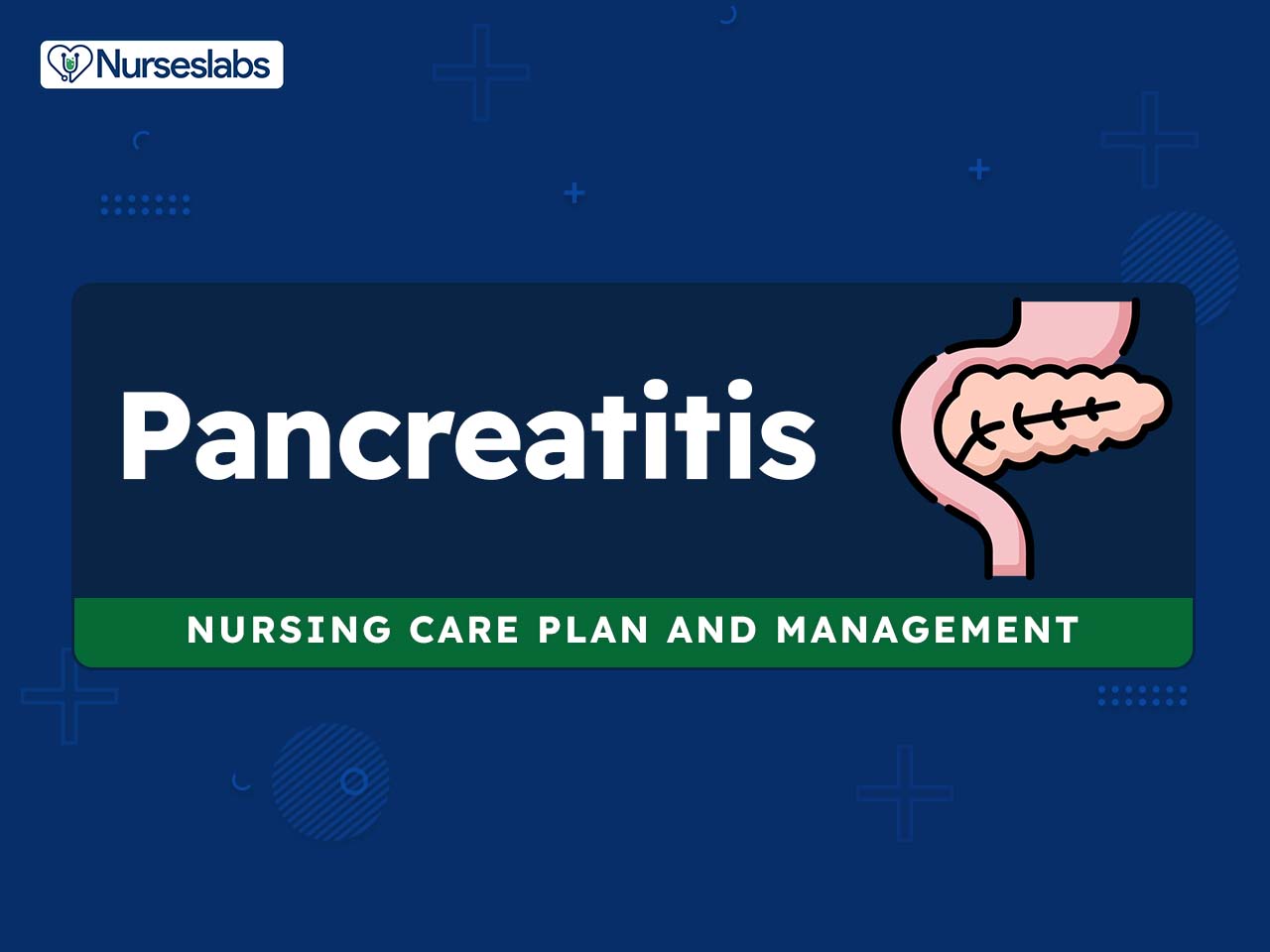



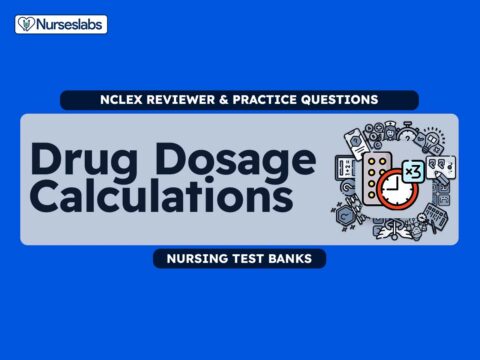






















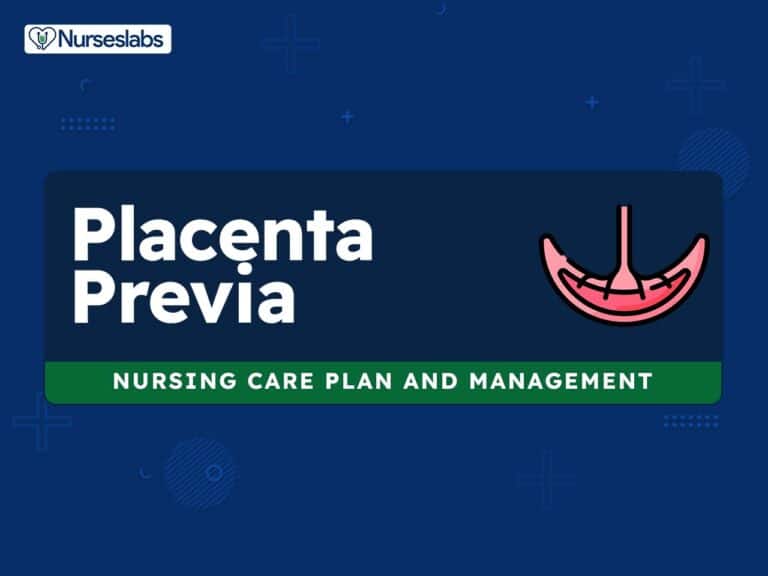

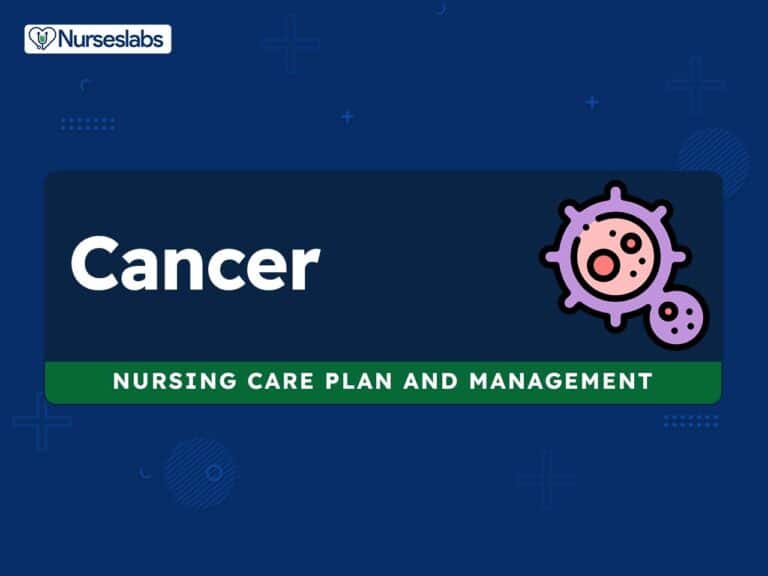
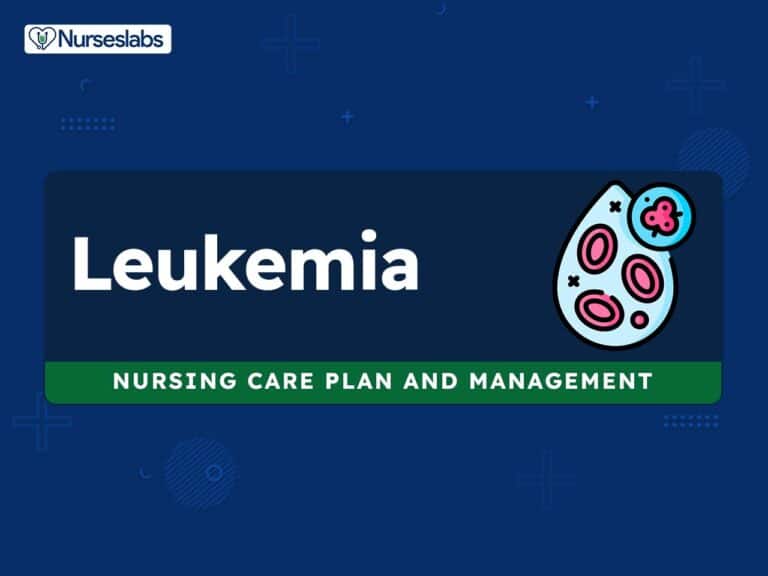
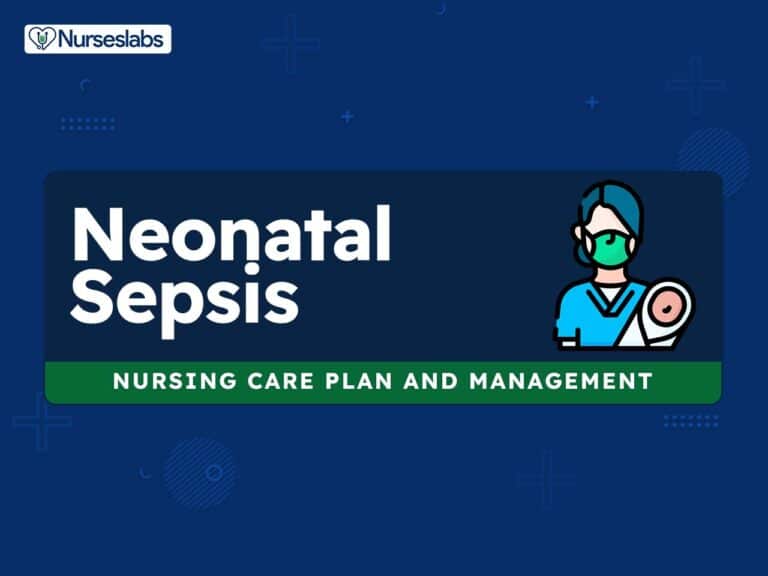

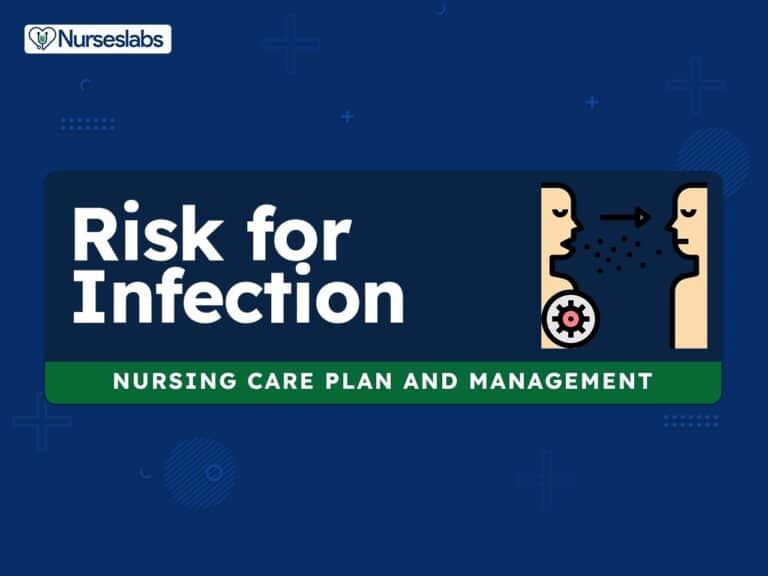
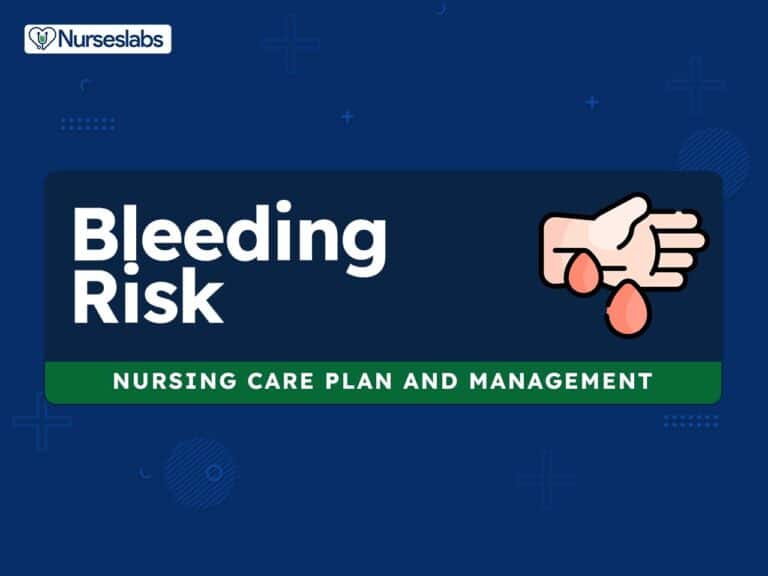
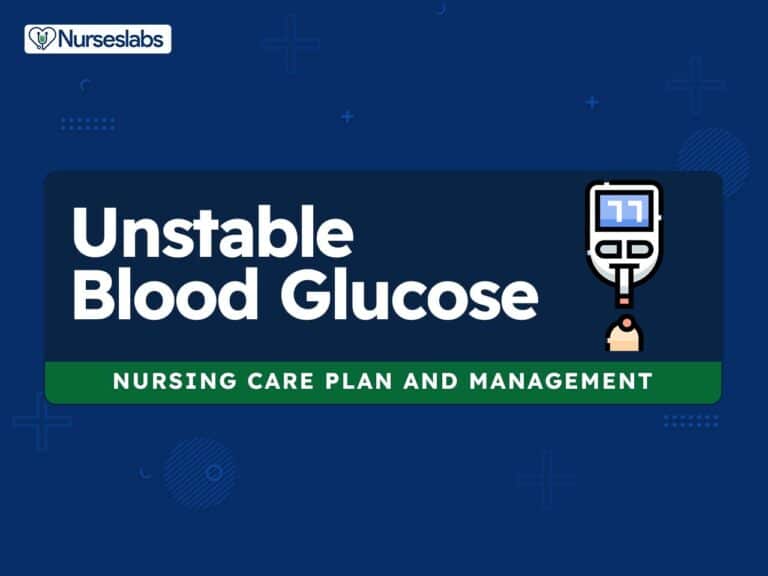
Leave a Comment